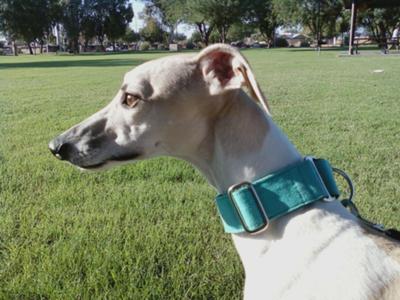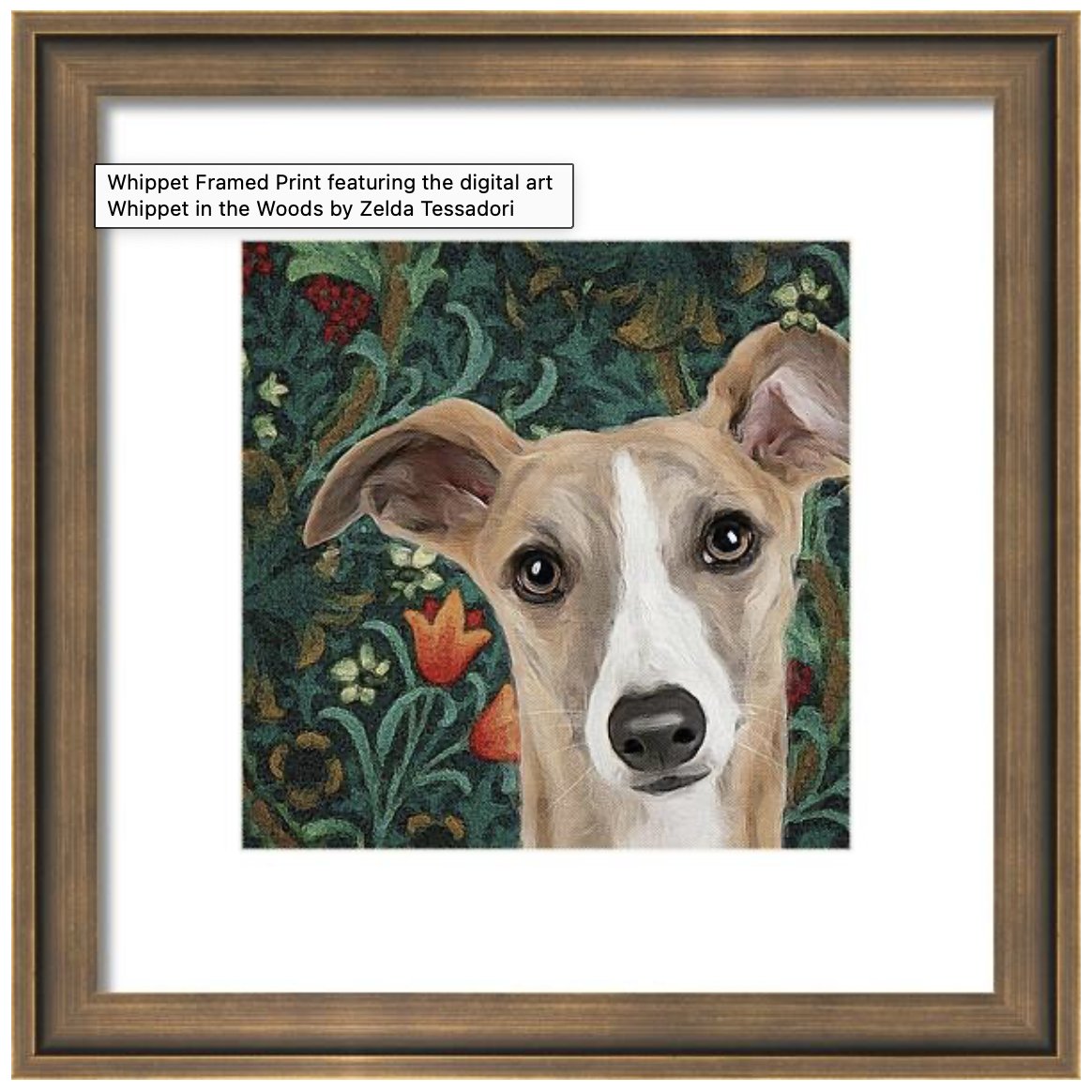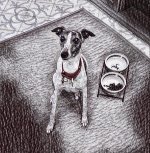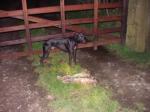Do you have a whippety question? Enter here your query or keyword.
- Home
- Whippet Puppies
- Best Harness for Whippet Puppy
Best Harness for Whippet Puppy: A Complete Guide
Everything you need to know about choosing the best harness for whippet puppy comfort, safety, and development.
Whippet puppies are gentle, graceful, and full of energy—but their unique body shape means they need specialized gear for walks and training. While martingale collars are widely recommended for adult Whippets, puppies benefit most from a well-designed harness. The right harness supports their delicate frame, prevents injuries, and gives you better control during walks and playtime.

Why Whippet Puppies Need a Harness
Whippets are built for speed. With their slim necks, deep chests, and narrow waists, they’re not shaped like most other breeds. This makes standard collars and even some generic harnesses a poor fit. For puppies especially, a traditional collar can put too much pressure on the trachea if they pull or lunge, increasing the risk of throat injuries or breathing problems.
A harness helps distribute that pressure more evenly across the puppy’s chest and shoulders. This is especially important for puppies who are still learning leash manners. They’re naturally curious and easily distracted, which can lead to sudden movements. With a harness, you can gently guide and correct without hurting them or making them fearful of the leash.
Beyond physical safety, a harness also provides peace of mind. Whippets are notorious for slipping out of regular collars because of their narrow heads. A properly fitted harness keeps your pup securely attached to the leash, reducing the risk of them running off—especially important in unfamiliar or busy environments.

What to Look for in the Best Harness for Whippet Puppy
Not all harnesses are created equal, and choosing one for a Whippet puppy means paying close attention to their unique anatomy. Here are the most important features to consider:
1. Adjustability
Whippet puppies grow quickly, and their proportions change as they age. A good harness should be adjustable at multiple points—typically around the chest, neck, and sometimes the belly. This ensures a snug but comfortable fit as your puppy develops. A poor fit could mean the harness is too tight (causing chafing) or too loose (making it easy to slip out of).
2. Lightweight and Breathable Materials
Whippets have very thin skin and fur, so they’re more prone to skin irritation. The best harness for whippet puppy comfort will be made from lightweight materials like soft mesh, neoprene, or padded nylon. Avoid stiff, heavy fabrics or harnesses with sharp edges, as these can cause discomfort, especially during longer walks.
3. Y-Shaped Front Design
For maximum freedom of movement, look for a Y-shaped harness that fits around the shoulders rather than across the chest. This design avoids putting pressure on the front legs or restricting your puppy’s natural stride, which is important for growing joints and developing muscles.
4. Secure Closures
Whippets can be surprisingly wiggly, especially when excited. The harness you choose should have strong buckles or closures that are easy for you to use but secure enough that your puppy can’t wiggle out. Some models offer dual D-rings (attachment points), giving you more control—especially useful during training.
5. Low-Profile Construction
A bulky harness might make your Whippet uncomfortable or even alter the way they move. Since Whippets are sensitive and streamlined by nature, a minimalist harness that still offers strength and control is usually the best choice.
How to Fit the Harness Correctly
Even the best harness for whippet puppy won't work as intended if it doesn’t fit properly. Before you purchase or put on a harness, make sure you measure your puppy’s chest and neck accurately using a soft tape measure. Here’s a quick guide:
- Chest girth: Measure around the widest part of your puppy’s ribcage, just behind the front legs.
- Neck circumference: Measure where the neck meets the shoulders—not too high or too low.
Once the harness is on, you should be able to fit two fingers between the harness and your puppy’s body. This ensures it’s snug enough to stay in place but not so tight that it restricts breathing or movement.
Pay close attention to signs of rubbing or irritation, especially behind the legs or around the chest. If you notice any redness or if your puppy constantly scratches at the harness, it might not be the right fit—or it may need further adjustment.
Introducing the Harness to Your Puppy
Puppies often need a little time to adjust to wearing a harness. The experience should be calm and positive so they associate the harness with good things, like walks and treats. Here’s how to do it:
- Let them explore the harness: Place it near them and allow them to sniff it.
- Try it on indoors first: Don’t attach the leash yet. Let your puppy wear it around the house for short periods while giving treats or praise.
- Practice short sessions: Gradually increase the amount of time your puppy wears the harness.
- Take your first walk: Start with a short, familiar route and keep it fun and low-pressure.
With consistent practice and encouragement, your Whippet puppy will quickly learn that the harness means good things—like adventures, attention, and exercise.
Harness vs. Collar: Why the Difference Matters
While martingale collars are a great choice for adult Whippets—offering gentle correction without the risk of escape—they’re not ideal for young puppies. Collars still put pressure on the neck, and they offer far less control than a harness when you’re just starting leash training.
In contrast, a harness supports both physical and behavioral development. You can guide your puppy without pulling or yanking, and you’ll avoid negative associations with walking. As your puppy grows and matures, you might transition to a martingale collar for casual walks or outings, but the harness should remain your go-to tool for training and safety during those early months.
Final Thoughts
Finding the best harness for whippet puppy development is an important step in raising a healthy, happy, and well-behaved companion. With the right harness, your walks will be smoother, your training more effective, and your puppy safer and more comfortable.
From adjustable fits to soft materials and thoughtful design, the ideal harness is one that respects your Whippet’s unique body and supports their playful, curious spirit. Take your time choosing, measure carefully, and don’t rush the introduction process. Soon enough, your Whippet pup will be walking confidently by your side, ready to explore the world.



